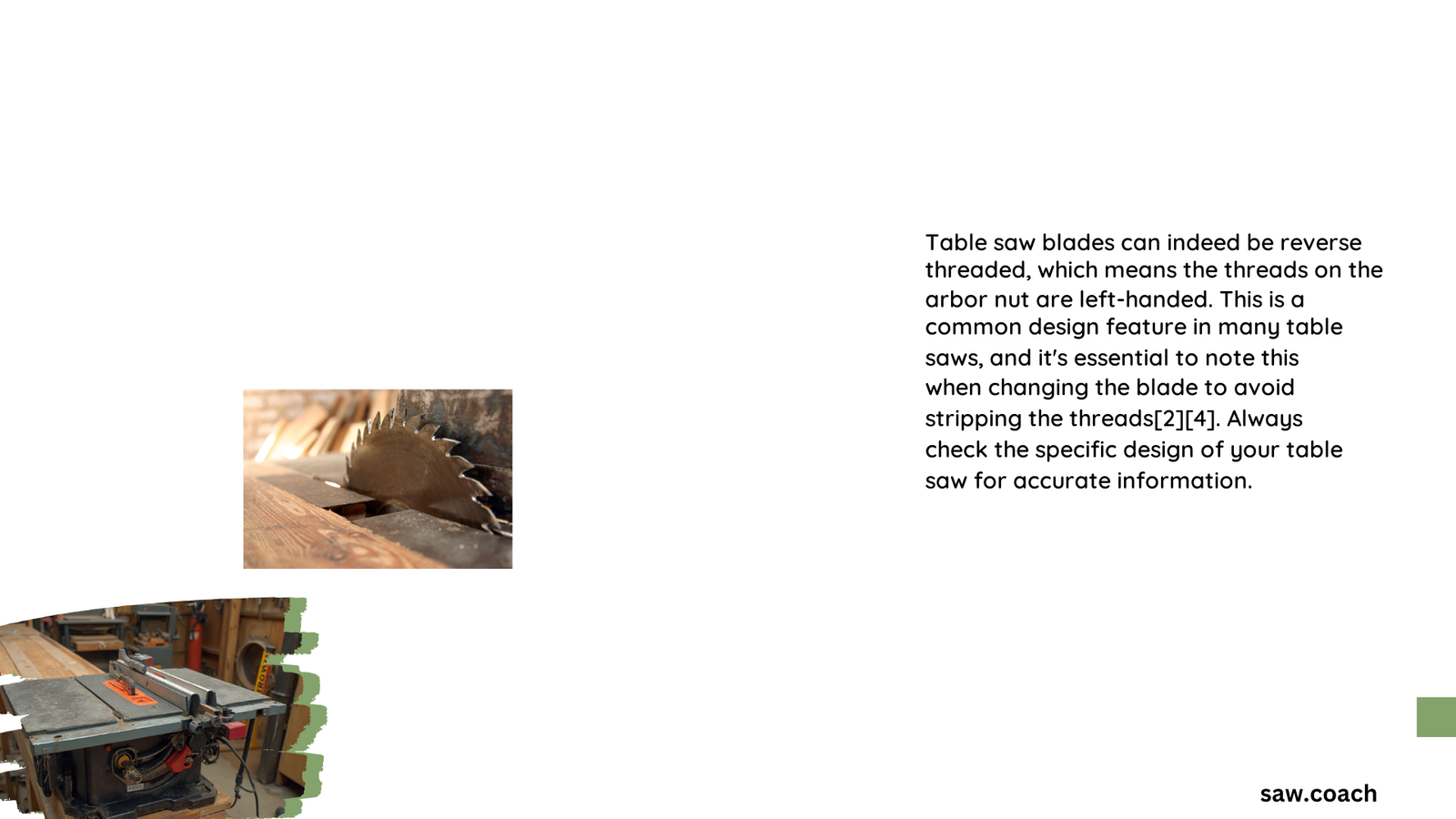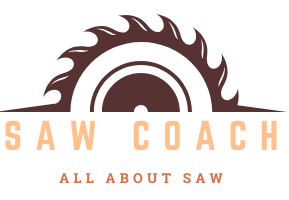Table saw blades are typically not reverse threaded, which is a critical detail for woodworkers and DIY enthusiasts. Understanding the standard threading mechanism ensures proper blade installation, optimal performance, and safety when operating table saws. Woodworkers need to know that most table saw blades follow a conventional right-hand threading pattern, which allows for secure and predictable mounting on the saw’s arbor.
What Makes Table Saw Blades Different from Reverse Threaded Designs?
Table saw blades are engineered with specific threading characteristics that distinguish them from reverse threaded alternatives. The standard threading design provides several key advantages:
Why Are Standard Threads Preferred?
- Consistent Mounting
- Right-hand threads ensure predictable blade installation
- Prevents accidental blade loosening during operation
-
Allows for quick and secure attachment to the saw’s arbor
-
Manufacturing Standardization
- Most table saw manufacturers use standard right-hand threading
- Simplifies blade replacement and compatibility
- Reduces complexity in tool design and maintenance
What Are the Technical Specifications of Table Saw Blade Threads?
| Thread Characteristic | Typical Specification |
|---|---|
| Thread Direction | Right-hand (Standard) |
| Arbor Diameter | 5/8 inches (Most Common) |
| Thread Pitch | Varies by manufacturer |
| Mounting Mechanism | Arbor nut with matching threads |
How Do Blade Threads Impact Woodworking Performance?

The threading mechanism directly influences blade performance and safety. Standard threading ensures:
- Consistent rotational stability
- Reduced risk of blade detachment
- Predictable cutting dynamics
- Simplified maintenance procedures
What Should Woodworkers Know About Blade Installation?
When installing table saw blades, woodworkers must:
- Verify thread compatibility
- Ensure proper tightening of the arbor nut
- Check for smooth rotation before operation
- Inspect threads for wear or damage periodically
Can Specialized Blades Have Different Threading?
While most table saw blades use standard threading, specialized applications might require unique mounting configurations. However, these remain exceptions rather than the rule.
Factors Influencing Blade Thread Design
- Saw manufacturer specifications
- Intended cutting application
- Industrial vs. hobbyist equipment
- Material being cut
Best Practices for Table Saw Blade Maintenance
- Clean threads regularly
- Use manufacturer-recommended torque specifications
- Replace damaged or worn arbor nuts
- Store blades in protective cases
- Inspect threading before each use
Conclusion: Understanding Blade Threading Matters
Woodworkers and professionals must recognize that table saw blades are predominantly not reverse threaded. This standard design promotes safety, reliability, and consistent performance across various woodworking platforms.
Key Takeaways
- Table saw blades use standard right-hand threading
- Reverse threading is extremely rare in woodworking equipment
- Proper thread maintenance ensures optimal saw performance
Reference:
– Woodworking Tool Guide
– Table Saw Maintenance Manual
– Professional Woodworker’s Resource
